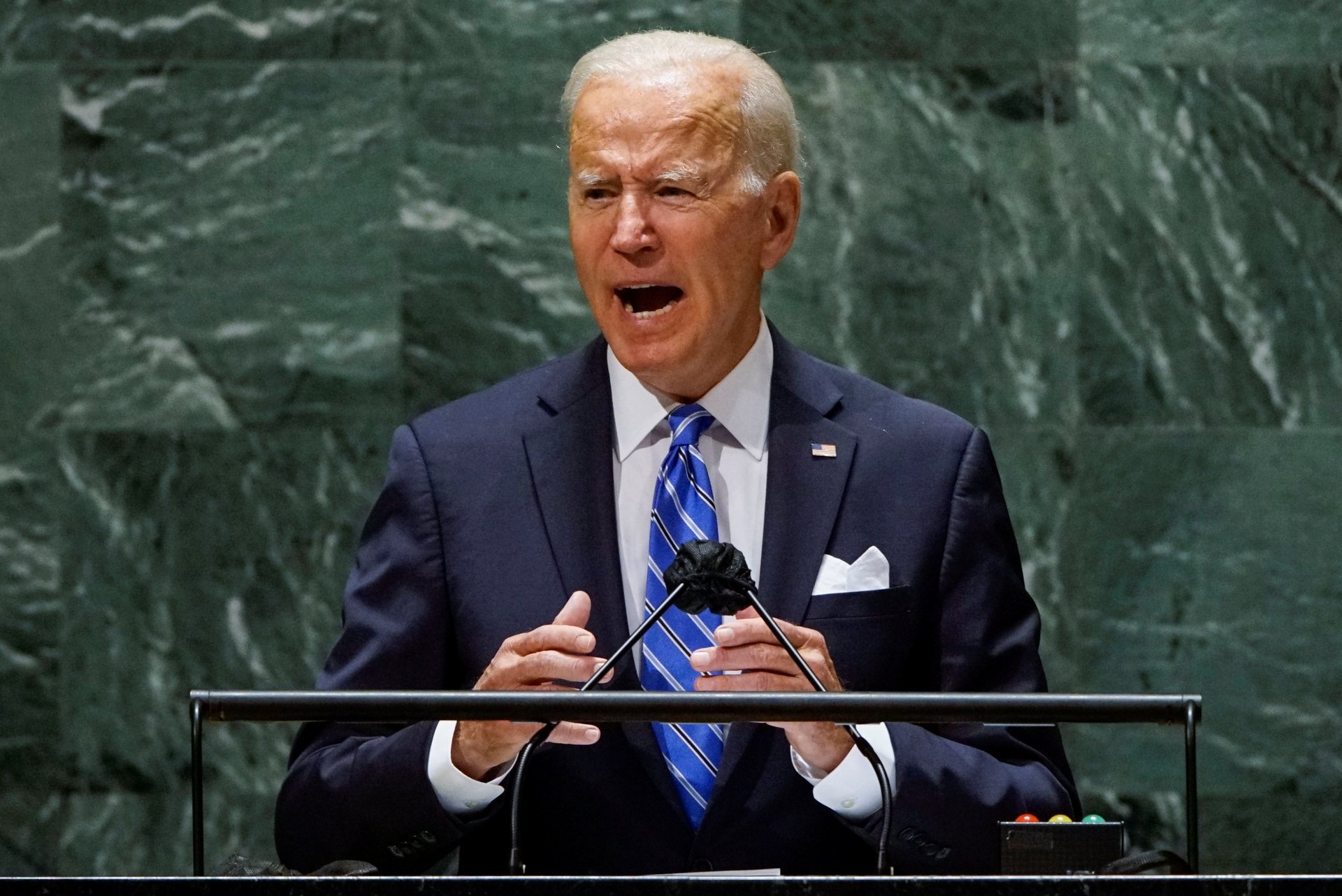Why Biden’s pledge to double US climate funding is more political than practical
President Joe Biden announced before the UN General Assembly on Sept. 21 that the US will double its financial commitment to help low-income countries tackle the climate crisis.


President Joe Biden announced before the UN General Assembly on Sept. 21 that the US will double its financial commitment to help low-income countries tackle the climate crisis.
“We have to support the countries and people that will be hit the hardest and that have the fewest resources to help them adapt,” Biden said. The pledge will add to the $5.7 billion promised to developing countries by 2024. The proposed $11 billion in annual climate funding will now need to be approved by Congress.
The new US commitment is a down payment on the global pledge made by developed nations in 2010 to allocate $100 billion annually in climate finance toward developing nations each year. What counts as “climate finance,” and who receives it, differs from country to country and in the case of the US is subject to the discretion of lawmakers. To meet the goals set forth by the United Nations, a much more robust financial commitment from developed countries is needed, some climate experts say.
Climate finance means different things to different countries
There is no one definition of climate finance, but the UN Framework Convention on Climate Change (UNFCCC) refers to it broadly as any financing that goes toward mitigating or adapting to climate change. The UNFCC contends that it is the responsibility of developed countries—many of which have contributed to high levels of greenhouse gas emissions over the years—to assist developing countries in achieving the climate goals outlined in the Paris Agreement.
While Organization for Economic Cooperation and Development (OECD) countries previously agreed to raise $100 billion annually for these efforts by 2020 they have continuously fallen short of this goal. Even that target is just a fraction of the trillions of dollars in public and private investment that will be needed: the cost of adapting to climate change in developing countries could rise to $500 billion per year by 2050, according to one UN estimate.
Two-thirds of the total climate financing given to developing nations since 2013 has gone toward mitigation efforts, according to an OECD report, and beneficiaries in south and east Asia received the biggest chunk of funding between 2016 and 2018. The OECD report does not provide details on the efficacy of these efforts, and adds that public finance providers “could provide further transparency” on the “climate-relevant” projects they assess. So far, much of this funding has been given to developing countries in the form of loans, rather than grants, according to an Oxfam report, and projects are often contingent on certain outcomes, which can slow progress in developing nations.
“The hoops that [developing] countries have to jump through are endless,” Charlotte Streck, director of the international climate policy consulting firm Climate Focus, told Quartz in April during a discussion on climate finance.
$100 billion target falls short of what’s needed
Biden’s pledge this week builds momentum behind global climate action before the UN climate conference this November in Glasgow, Scotland. Postponed due to the pandemic, this year’s conference is expected to shift countries’ focus from hammering out the rulebook for the Paris climate agreement to concrete emission reduction efforts that meet the accord’s goal of limiting global warming to “well below 2 degrees Celsius, preferably to 1.5 degrees Celsius, compared to pre-industrial levels.”
Nat Keohane, president of the Center for Climate and Energy Solutions, called the commitment “significant,” especially after the Trump administration cut almost all international financing toward global climate efforts. The success of the Paris Agreement depends “not only on getting countries to set ambitious emission reduction targets and implement policies to meet them, but also on mobilizing global financial flows with a low-carbon and climate-resilient economy,” Keohane wrote by email.
But achieving the $100 billion target alone would not be enough to contain rising global temperatures and cope with the effects of climate change, says Kaveh Guilanpour, vice president for international strategies at the Center for Climate and Energy Solutions. Instead, the world’s financial systems need to reflect the costs of climate inaction. That means companies, banks, investors, and other players will need to reduce investments in high emission activities while boosting funding for climate-friendly goods, services, and infrastructure.
That makes today’s climate finance pledges by OECD countries as much about political messaging as building a low-carbon economy. “The $100 billion is essential as a trust-building issue,” says Guilanpour, “and the president’s announcement was hugely helpful in that regard. At the same time, it will never be enough to affect the transformation that the Paris Agreement requires—which needs trillions in investment, not billions.”